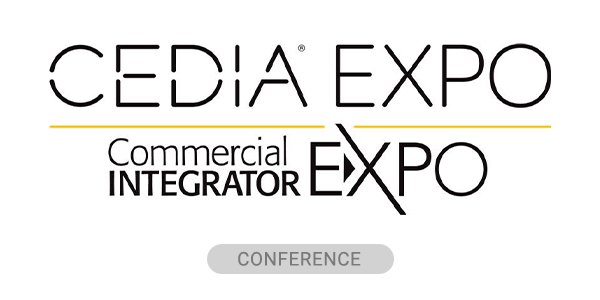The workplace has shifted, but has your technology kept up? Hybrid work thrives on the right tools. Productivity now depends on more than traditional setups; it demands technology that fosters seamless collaboration and keeps employees engaged, no matter where they’re located.
The good news? The right systems can turn common challenges into competitive advantages.
Business leaders, HR managers and IT decision-makers need systems that simplify team coordination across different locations. These tools ensure remote work runs efficiently and keep employees engaged and productive. Clear communication and seamless collaboration provide organizations with the confidence that their hybrid work strategies will succeed.
Importance of User-Friendly Systems
It’s important to ensure that all team members, regardless of their location, can engage with technology seamlessly. A straightforward interface minimizes the learning curve, allowing employees to focus on their tasks rather than navigating complex software. For businesses, this translates to improved productivity and reduced downtime.
User-friendly systems also play a pivotal role in employee engagement, fostering a more inclusive and collaborative work environment. When technology is easy to use, it encourages more frequent and effective communication, a key component in successful hybrid work models.
Additionally, intuitive systems can reduce the burden on IT support, allowing teams to resolve minor issues independently. As organizations continue to adopt hybrid work strategies, investing in user-friendly systems should become a strategic priority to ensure smooth operations and team satisfaction.
Enhancing Employee Engagement
Boosting employee engagement in hybrid setups is essential for keeping productivity and morale high. As the lines between remote work and in-office tasks blur, it takes thoughtful strategies to keep employees connected and driven. Easy-to-use collaboration tools can improve engagement by offering tools with smooth interaction and feedback. Supporting virtual meetings, instant messaging, and project management can help maintain a feeling of community, even when employees aren’t together in person (or even in the same time zone).
It’s not just about engagement for engagement’s sake, though: using a range of tools that cater to different ways of communicating ensures that everyone feels their work and opinions are valued. When employees feel engaged, they’re more likely to contribute positively to team goals and come up with innovative ideas. Additionally, giving employees the chance to grow with online resources and training aligns with their career aspirations, keeping them even more engaged in a job that allows them to grow professionally.
Engaging Employees Across Boundaries
Collaboration technology holds remote work together, making sure that scattered teams stay connected and productive. Cloud-based document-sharing, task trackers and virtual meeting platforms help juggle tasks and keep things running smoothly, no matter where your team is located. These tools also ensure everyone stays on the same page by providing easy access to information anytime, cutting down on delays and mix-ups.
Automation and system integrations mean less time spent on manual tasks, freeing up employees to dive into more meaningful work. This boost in efficiency not only kicks productivity up a notch but also ramps up job satisfaction, as people are able to focus on what really matters rather than repeating tasks rote. Companies that invest in these tools can fine-tune their remote work game plan and pave the way for long-term success.
Boosting Team Collaboration
For any hybrid work setup to thrive, boosting team communication is a must, and that’s where collaboration technology comes in. These tools do a great job of bridging the gap between those working remotely and those in the office by offering real-time interaction platforms. Shared workspaces, video calls, and instant messaging make sure team members can collaborate smoothly, no matter where they are, and they break down silos by making it easy to access shared documents and resources.
In addition, features for task assignments and progress tracking help teams stay on track with their goals, making sure everyone is accountable and in sync. These tools also spark innovation by creating a space where different ideas can be exchanged and improved.
Choosing the Right Productivity Tools
Effective tools should meet specific criteria to ensure they add value and facilitate seamless operations.
- Ease of use: tools must be intuitive and require minimal training to maximize adoption and utility.
- Compatibility: how can you integrate smoothly with existing systems to prevent workflow disruptions.
- Scalability: can the tool to grow alongside the organization and adapt to changing needs. Security features must be robust to protect sensitive data, especially when accessed from various locations.
- Customizability is also beneficial, enabling organizations to tailor functionalities to their unique requirements.
- Reliable customer support: quickly resolve issues and ensure minimal downtime.
By using this criteria to assess tools, businesses can choose solutions that effectively support their hybrid work strategies, fostering a productive, secure and collaborative work environment.
Impact on Hybrid Work Success
The right productivity tool choice can make or break the success of hybrid work setups. The best tools simplify how work is done, improve how communication happens, and boost teamwork — all critical for thriving in a hybrid environment. They help close the gap between those working from home and those at the office, keeping everyone connected and engaged.
Simplifying information sharing and project management reduces confusion and enhances team efficiency. Tools that integrate smoothly with existing systems maintain seamless operations, avoiding disruptions and ensuring data security.
Employees can focus on their responsibilities without technical roadblocks, leading to higher job satisfaction and improved morale.
For integrators, helping to select and implement tools that meet these criteria strengthens client relationships and showcases the value of smart and valuable AV systems. It builds a solid foundation for long-term partnerships while helping organizations excel in hybrid environments. The right technology not only addresses challenges but also opens doors to new opportunities and innovation.
Bill Thrasher, chief operating officer, has over 15 years of experience at AV-Tech Media Solutions.











